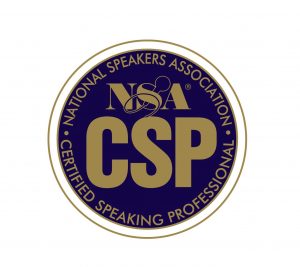So many companies have a core value or a stated platitude that “our employees are our greatest asset” and yet their head of HR doesn’t have a seat at the strategic leadership table.
From my experience, as a VP of Human Resources for several companies and working as an organizational change consultant for organizations for the past 14 years, there are several potential reasons for this situation.
The first thought that comes to mind is that “It takes two to tango.”
What I mean by that is, to start, the head of HR and the C-Suite need to be aligned about purpose and objectives of the HR function.
Some organizational leaders see Human Resources as a “necessary evil.” They think the purpose of HR is to keep them out of trouble with the law and to carry out employment related transactions, such as process paperwork for new hires, promotions and termination, enroll employees in benefit plans, making sure all forms, reports and details are complete. I might add, that many organizational leaders who view human resources in this way are the same people who complain that HR is just a bunch of paper pushers who “get in the way of doing business.” I’d like to suggest that you got what you asked for…
And there are many human resource professionals who see their roles as being the “gate-keeper” and making sure the company is compliant. There can be a plethora of reports and frequent hand slapping for not following through or completing all information as required. In the eyes of operational management, it can feel like going to the principal’s office and HR people get in the way of what it takes to make the company successful. I might add, that HR professionals who view operational management as disrespectful of the law and ignorant of the need for process, also get what they ask for…
So , how does one create a contemporary, relevant partnership between the C-Suite and Human Resources?
The first step is to respect the role and function of each participant. To paraphrase an expression, consider this: What is the difference between an Operational executive and an HR processional? The HR professional knows they’re not an expert at operations.
Many years ago I was hired as a VP of HR to assist a company transition to a new business model that would require hiring over 500 managers over a three year period. Because I came from outside their industry, they didn’t think I knew anything.
What I did know – was Human Resources, regardless of industry – how to hire, train and compensate people in a way that transcends specific operational industry knowledge.
What I did know is that their process for hiring one manager could take three to 6 months and, at that rate, hiring 500 managers would be impossible.
So, the first step for operational executives, is to realize that Human Resources is a profession that has a specific set of knowledge and skills that commands respect and awareness that can contribute to a bigger vision. The second step is to understand that an HR professional who earns the seat at the executive table can link HR functions to the strategic vision and gain support for the compliance issues in a way that operational managers can respect the HR laws as a “the cost of doing business.”
The first step for HR professionals is to realize that operations wants a partner who will help them reach organizational goals – which is not a bunch of transitionally based processes. The senior level HR person has to be able to understand the strategic plan and create and link business cases, as needed for HR initiatives. HR needs to strategically develop and implement products and services to meet the company needs and communicate them in a way that operations understands. (Basic marketing 101 – which most HR people do not have a clue about.)
The next step for success is to have a “seat at the table” for the senior HR person who is a strategic thinker, relationship builder and collaborator. Then to have operational HR people who can put the systems in place and provide “user friendly” service to assure success.









